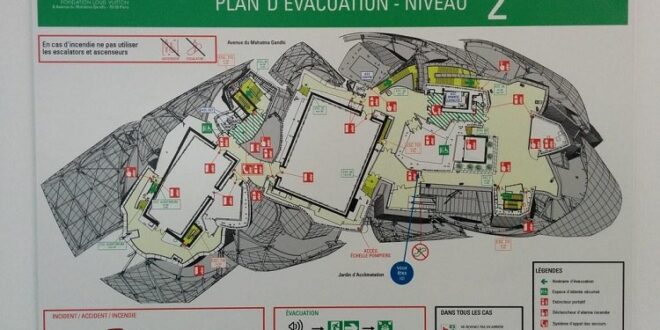We never know when a calamity like a flood, fire, or earthquake can hit us. Therefore, we should stay prepared in advance to escape these risky conditions. Moreover, emergencies cause panic and create more confusion. And people have not practiced what to do exactly at such times at houses as well as offices. Therefore, having an effective emergency evacuation plan is the best possible way to protect yourself and others.

Moreover, giving your employees proper training helps them quickly leave the office and take shelter at a safe place. Finally, every office should have its personal emergency evacuation plan prepared by professionals. Here we outline the important aspects of a solid emergency evacuation plan for an organization.
-
Recognize the potential disasters
Preparing a list of all the possible calamities you can encounter depending on the geographical location, weather conditions, and other artificial factors. And arrange them according to the severity of the conditions and the resources needed to manage the situation. For example, suppose your workplace is not anywhere near the coastal area. In that case, you can put the hurricane planning in the end, whereas on the other hand, if your workplace is in an area prone to earthquake, then enlist it on the top, including the risks involved and the required resources. This is how an efficient evacuation plan can be prepared, ensuring maximum safety to the employees. Using this matrix or list, you can plan well further.
-
Define roles and responsibilities
Before making an evacuation, everyone should be clear about their roles and responsibilities. In emergencies, if people are unclear about what to do and how to do it, it can create more chaos. On the other hand, an evacuation plan can run smoothly and quickly if every person knows and understands their role. The most common and required job roles during an emergency can be as follows:
Evacuation coordinator: An evacuation coordinator is the one who makes the check that every step is done properly.
Head Checker: Another important responsibility is carried out by the head checker. He makes sure that nobody is left behind inside the workplace. He first counts the employees at the exit of the building, and then again, he rechecks that every employee has reached the designated shelter.
Emergency first aid practitioner: You should ensure that few First Aid Certification help the injured until professional medical help arrives. There are high chances that people may get injured while leaving the place in hurry and panicking, so having some first aid practitioners can make it easy for the others who need medical help. To train your employees, you can conduct some training programs for them.
Alert manager: Alert manager also plays an important role in successful execution plans by calling emergency numbers to alert the police, medical help, and the fire department. Also, the alert manager is responsible for closing the fire doors and turning off the gas lines in case of an earthquake and flood.
-
Find out Escape routes and the nearest exit doors
![]()
An efficient evacuation plan for an organization is the one with the most feasible escape routes. Therefore, there should be clear and a proper mark indicating the emergency routes, exits, and fire escapes. Also, these roads should be clear and not occupied with some furniture and other office property that can block the path.
Even if it is a small-scale or large-scale office, employees should be familiar with every floor’s multiple maps and diagrams. Moreover, the main persons responsible for guiding the employees to evacuate the office should communicate with alert media.
-
Availability of required safety equipment
Sometimes in certain emergencies, the workforce has to use some safety equipment to make a safe evacuation. Therefore, the employees should be aware of where these safety tools are placed and how to use them accurately. It may include:
- Safety goggles
- Face shields
- Gloves
- Hoods and chemical suits
-
Testing of the plan
Even after creating the evacuation plan taking care of every critical step, you would not know if it would be successful during the emergencies or not? So, to make sure you have got an effective evacuation plan, you should perform a series of tests to know the efficiency of your plan. Then after executing the plans, the security manager will be able to find out the weaknesses of the plan and give some recommendations to improve the plan. The following questions can help you find out the efficiency of the plan:
- Were employees evacuated quickly and safely?
- Did all the staff members reach the designated shelter?
- Were the evacuation routes being clear?
Summing up
A poorly prepared emergency evacuation plan can put the lives of your employees in danger. Without following the right procedures to evacuate the workplace is not acceptable since your employees are your responsibility. Therefore, without thinking about the cost of preparing an emergency evacuation plan, hire the right professionals who can provide you with an effective plan.
 HammBurg Be informed with latest news, reviews, entertainment, lifestyle tips, and much more.
HammBurg Be informed with latest news, reviews, entertainment, lifestyle tips, and much more.




